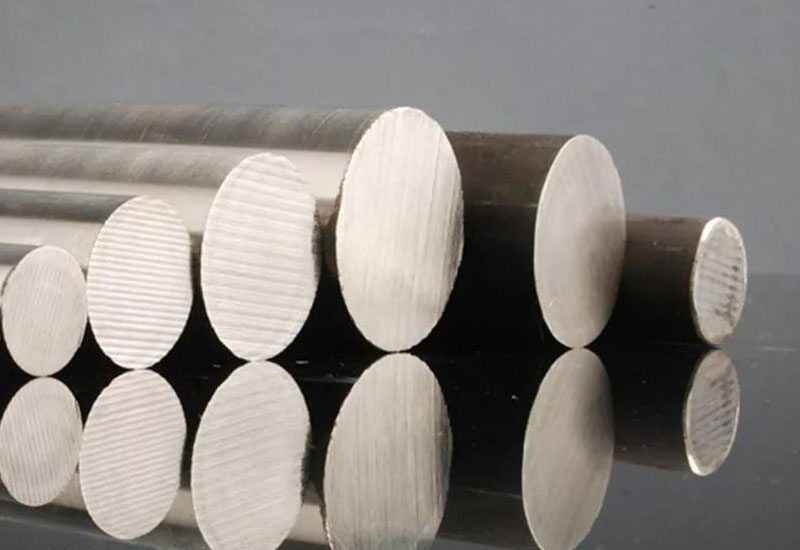Nitronic 60 is a high-performance austenitic stainless steel that stands out for its exceptional wear resistance, galling resistance, and high-temperature strength. Engineered for demanding applications, this alloy is a top choice for industries requiring reliable performance under extreme conditions. Whether in aerospace, marine, or manufacturing, Nitronic 60 delivers unmatched durability and functionality.
This guide explores Nitronic 60’s composition, properties, advantages, and industrial applications, shedding light on why it is a preferred material in critical engineering sectors.
What is Nitronic 60?
Nitronic 60 is an austenitic stainless steel alloy known for its unique combination of mechanical and chemical properties. It is officially classified as UNS S21800 and contains a balanced mix of iron, chromium, nickel, manganese, and silicon. The alloy’s innovative formulation provides superior resistance to wear, corrosion, and galling, setting it apart from standard stainless steels.
Chemical Composition of Nitronic 60
The key elements in Nitronic 60 contribute to its outstanding performance:
- Chromium (16-18%): Enhances corrosion resistance.
- Nickel (8-9%): Provides toughness and ductility.
- Manganese (7-9%): Strengthens the alloy and improves wear resistance.
- Silicon (3.5-4.5%): Reduces galling and enhances high-temperature stability.
Key Properties of Nitronic 60
1. Superior Wear Resistance
Nitronic 60 offers outstanding resistance to wear, making it a perfect material for applications involving high-friction environments. Its silicon and manganese content significantly reduces surface damage caused by metal-to-metal contact.
2. Exceptional Galling Resistance
Unlike many other stainless steels, Nitronic 60 is highly resistant to galling, even under heavy loads and sliding conditions. This makes it ideal for components like fasteners, bushings, and bearings.
3. Corrosion Resistance
Nitronic 60 exhibits excellent corrosion resistance, comparable to 304 and 316 stainless steels. It performs well in marine environments, chemical processing plants, and other corrosive conditions.
4. High-Temperature Stability
The alloy maintains its mechanical strength and resistance at elevated temperatures, making it suitable for heat exchangers, furnace parts, and other high-temperature applications.
5. Mechanical Strength
Nitronic 60 has a higher yield strength than many conventional stainless steels. It retains its strength in cryogenic conditions, enhancing its versatility for diverse industries.
Advantages of Using Nitronic 60
- Cost-Effectiveness: Despite its high performance, Nitronic 60 is cost-effective due to its durability and low maintenance requirements.
- Versatility: Suitable for various applications, including extreme temperatures and corrosive environments.
- Longevity: Its superior wear and corrosion resistance ensure long-lasting performance.
- Ease of Fabrication: Nitronic 60 can be easily machined and welded, allowing for efficient manufacturing processes.
Industrial Applications of Nitronic 60
1. Aerospace Industry
Nitronic 60 is widely used in the aerospace sector for components that require high strength and wear resistance. Applications include fasteners, actuator shafts, and landing gear bushings.
2. Marine Industry
Due to its excellent corrosion resistance, Nitronic 60 is ideal for marine applications like propeller shafts, pump components, and seawater valves.
3. Chemical Processing
The alloy’s ability to withstand chemical corrosion makes it suitable for heat exchangers, mixers, and other equipment exposed to harsh chemicals.
4. Automotive Industry
In the automotive sector, Nitronic 60 is used for exhaust valves, brake components, and other parts that endure high wear and temperature fluctuations.
5. Oil and Gas Industry
Nitronic 60 is often employed in oil and gas applications, such as pump wear rings, valve stems, and flow meters, due to its resistance to galling and corrosion.
Comparison with Other Alloys
Nitronic 60 vs. 304 Stainless Steel
- Strength: Nitronic 60 offers higher strength and wear resistance.
- Corrosion Resistance: Comparable, but Nitronic 60 performs better in high-friction applications.
Nitronic 60 vs. 316 Stainless Steel
- Wear Resistance: Nitronic 60 significantly outperforms 316 in wear and galling resistance.
- Cost: Slightly more expensive, but the durability justifies the cost.
Nitronic 60 vs. Duplex Stainless Steel
- Corrosion Resistance: Duplex steels may offer higher corrosion resistance, but Nitronic 60 excels in galling and wear resistance.
Fabrication and Machining
Nitronic 60 is relatively easy to fabricate compared to other high-performance alloys. Its machinability is enhanced by its balanced chemical composition, allowing for efficient manufacturing processes.
Welding Nitronic 60
The alloy supports various welding techniques, including TIG, MIG, and arc welding. It exhibits minimal distortion during welding, ensuring dimensional accuracy in finished components.
Heat Treatment
Nitronic 60 is non-hardenable through heat treatment, but its mechanical properties can be adjusted by cold working.
Maintenance and Longevity
Nitronic 60’s resistance to wear and corrosion minimizes maintenance requirements. Routine inspections and cleaning are sufficient to ensure its longevity, even in harsh operating conditions.
Why Choose Nitronic 60?
Nitronic 60’s unique properties make it an invaluable material for industries that demand reliability and durability. Its performance in wear-intensive and corrosive environments ensures long-term savings by reducing repair and replacement costs.
By choosing Nitronic 60, industries can enhance operational efficiency, improve product longevity, and reduce downtime, making it a smart investment for critical applications.
Conclusion
Nitronic 60 stands as a remarkable material in the world of stainless steel alloys, offering unmatched wear and corrosion resistance, superior strength, and high-temperature stability. Its versatility makes it an indispensable choice for applications across aerospace, marine, automotive, and more.
Understanding its properties and potential uses allows industries to unlock its full potential, ensuring efficient and reliable performance in even the most demanding environments.
If you’re looking for a material that combines durability, cost-effectiveness, and exceptional performance, Nitronic 60 is a top contender.
